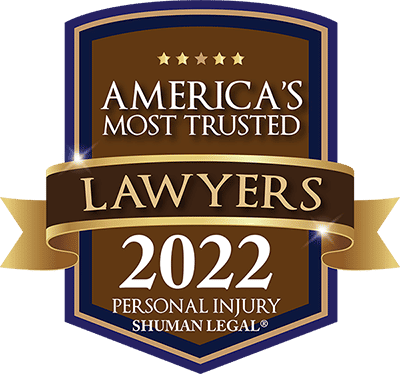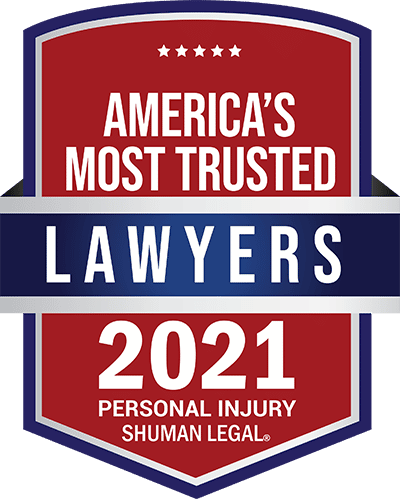Hair Relaxer Lawsuit: Understanding the Risks and Legal Implications
Last updated Friday, July 19th, 2024
Struggling with Health Issues After Using Hair Relaxers? Here’s What You Need to Know

Unfortunately, no one knew they were inviting cancer trying to avoid a bad hair day. Well, that’s only partially true. The manufacturing companies knew they were playing with fire. They used known carcinogens and hormone-hijacking chemicals as part of their hair relaxer formula. These chemicals started causing a breakout of uterine, endometrial, and ovarian cancers.
However, the manufacturers refused to step up and protect their customers until the problem was too big to be ignored. They chose a path of outrageous negligence to protect their profit margins.
However, it’s time to turn your outrage into action – legal action – to fight for your rights and secure your well-being. There are over 236 pending lawsuits filed across all 50 states against the liable hair relaxer manufacturing brands. Companies like L’Oréal, Namaste, Godrej Consumer Products, Strength of Nature Global, and Revlon have been identified as the primary liable parties.
Do You Have a Case?

The cases are expected to keep exploding in the next few months as more victims come forward to prove this cancer link. A group of 35 hair relaxer injury lawyers have been appointed to lead the hair relaxer mass tort. It’s important to note that each plaintiff will need to hire their own lawyer to establish a link between their injury and hair relaxer usage. Each victim will be entitled to a unique settlement based on a variety of factors.
We know how devastating the battle against cancer can be physically, mentally, and financially. If you’ve been diagnosed with cancer after using hair relaxers, we’re ready to stand up and get you justice. You deserve to be fairly compensated for your suffering and supporting your recovery. And our team of experienced product liability lawyers will take charge of every legal challenge so that you can peacefully recover with your loved ones.
Call us today for a FREE case review. We’ll let you know if you qualify for the hair relaxer mass tort and what steps we’ll take to win your settlement.
How Hair Relaxers Work: Unraveling the Chemical Process
Did you know hair relaxers have to damage your hair in the name of “relaxing” them?
These high-Ph cream emulsions are strong alkalis that break down the highly sensitive protein in your hair strands. What happens when you apply them to the base of your hair shaft? The strong alkali solution damages the keratin in your hair. It breaks down the important disulfide bond and changes its texture. It eliminates frizziness and curls. Your hair becomes a lot smoother and easy to comb and tie. Only temporarily.
Once the treated part of your hair grows further out from your scalp, you may need another round of hair relaxer treatment. It takes approximately 4 – 8 weeks for this natural growth to show up. Your new hair will come back with its natural texture intact.
You multiply your risk of exposure to these carcinogens every time you seek treatment. Unfortunately, these products have been around for a while and have become a regular part of hair care routines.
Do You Have a Case?

EDCs and Phthalates in Hair Relaxers: Health Implications
Multiple studies have confirmed that hair relaxer creams are packed with endocrine-disrupting chemicals (EDCs). Unfortunately, we only know they mess up your body’s natural hormonal balance. There’s no way to predict exactly how this imbalance could affect your health.
A recent study by the Journal of Exposure Science & Environmental Epidemiology reported two shocking findings:
- EDCs in hair relaxers can boost estrogen production
- They can lower your production of androgens
This hormonal imbalance can increase your risk of developing ovarian tumors, uterine polyps, fibroids, and endometriosis pain. You are much more likely to develop uterine, breast, ovarian, and endometrial cancers.
Your disrupted androgen production can disrupt your insulin regulation. As you can see, hormonal imbalances can create a domino effect of disasters in your body.
It’s hard to pin down how these EDCs disrupt your hormone balances, but the damage is undeniable.
Here are some popular theories of what happens when EDCs enter your system:
- Your hormone production is artificially decreased
- They mimic natural hormones, which programs your endocrine system to lower its hormone production
- These chemicals get in the way of your hormones reaching their receptors
- They accelerate your hormone metabolism, which stresses your system to keep producing hormones
Phthalates have been identified as another dangerous chemical found in hair relaxers. All the liable parties were manufacturing hair relaxer products that contained Di-2- ethyl hexyl phthalate (DEHP). This highly toxic substance is carcinogenic and can easily interfere with natural hormone production.
It can lead to horrible side effects like cancer, endometriosis, developmental issues, reproductive dysfunction, and infertility. Hair relaxers also contain formaldehyde and parabens. It’s hard to nail down a single culprit for your health issues when there are so many triggers.
So why did the manufacturers stick with these shady ingredients with unpredictable side effects? The answer is predictable – cutting production costs.
Now the big question is – how do these toxins go from your scalp all the way down to your reproductive parts? Isn’t your skin supposed to be a protective barrier?
The truth is your skin is semi-permeable. It can filter out some particles, but it can easily absorb a lot of chemicals too. They go straight into your bloodstream and travel to different organs once they’re absorbed.
There are two primary reasons why EDCs and phthalates easily sneak in and sabotage your system:
- Your scalp’s blood vessels are closer to the surface of your skin compared to the rest of your body. These blood vessels also transport blood more actively, which makes it easy for anything that’s absorbed to be circulated throughout your body.
- Hair relaxers or perm treatments often lead to scalp burns. This damages your protective skin barrier and gives easy access to the toxins in these products.
Do You Have a Case?

Lack of Federal Oversight: Regulatory Challenges

You may be surprised to know how easy it is to pull it off. The FDA doesn’t have the same level of authority over regulating cosmetics as it does over foods, drugs, and medical devices.
Cosmetics don’t require any FDA premarket approval unless they contain some color additives. We probably wouldn’t have seen a sharp spike in cosmetics-related lawsuits over the past few years if this industry was properly regulated.
There’s minimal supervision over what chemicals manufacturers choose to add to their hair relaxer products. They are required to declare all their ingredients under the Fair Packaging and Labeling Act.
However, it’s important to note that there’s no law requiring manufacturers to list fragrances or flavors. That’s how they’re able to sneak in several toxic substances by combining them with fragrances. So you have no way of knowing whether you’re caking your scalp with toxic EDCs and phthalates.
How can regulatory agencies protect you when they’re not even aware of the substances used? They can’t. Perhaps these lawsuits might be the catalyst needed to make the necessary regulatory changes.
Uterine Cancer and Its Connection to Hair Relaxer Use
Uterine cancer is the 4th most common type of cancer faced by women. A large-scale study revealed that women who frequently used hair relaxers are 2.5 times more likely to develop uterine cancer. Such studies are strengthening the lawsuits brought forth by cancer victims who used these products.
However, it’s important for you to focus on recovering from cancer and allow us to build your case. You need to identify the type of uterine cancer you’re dealing with. Is it endometrial cancer or sarcoma?
Endometrial cancers are much more common and have a high overall survival rate. However, the sarcoma type of uterine cancer is much more dangerous and has a lower survival rate.
It’s possible that both forms of uterine cancer are caused by phthalate metabolites found in hair relaxers. African-American women reported nearly twice as many cases of uterine cancer compared to other women. Interestingly, African-Americans also use hair relaxers more often because of the natural texture of their hair.
Ovarian Cancer: Examining the Hair Relaxer Link
The good news is ovarian cancer is fairly uncommon and accounts for less than 1% of all cancer cases. The bad news is your overall survival possibility is much lower compared to uterine and breast cancer. Why? Because it’s hard to detect ovarian cancer in its early stages. Only 20% of ovarian cancer cases are detected in the first stage. There are minimal symptoms. So monitoring it is extremely difficult too.
Most ovarian cancer cases only get diagnosed when it’s too late for effective treatment. It’s hard to control the spread of this cancer in its advanced stages.
A 2021 NIH study showed that there’s a significant link between hair relaxer use and ovarian cancer. It assessed that endocrine disruptive chemicals (ECDs) being absorbed into the bloodstream could be a probable cause of ovarian cancer. Women who used hair relaxers more than 4 times a year were twice as likely to face ovarian cancer.
Hair Perms: Unforeseen Risks and Overlapping Toxins
Are hair perms safer than getting a hair relaxer treatment? Not really. Most hair perm products contain the same carcinogenic chemicals found in hair relaxers.
Don’t get confused by exotically-named treatments like keratin treatments, Brazilian blowouts, and Japanese hair smoothing treatments. If you’re unsure about the chemicals used in these processes, it’s better to steer clear of them.
There are multiple cancer cases tied to hair perms that are coming up too. So you can file a lawsuit against the liable companies to get compensated for your injuries.
Hair Relaxer Class Action Lawsuit: The Growing Potential
The Judicial Panel on Multidistrict Legislation approved the hair relaxer class action lawsuit in February 20223. This MDL has been assigned to Judge Mary Rowland in the Northern District of Illinois in Chicago.
What does that mean for you? A stronger and more streamlined legal process with a much better chance of getting a fair settlement. You’ll be able to pursue your claim directly by joining the MDL instead of filing it in your home state.
The defending parties responded by filing a motion for pretrial discovery, focusing solely on general causation. This is a common delay tactic used to buy more time and figure out strategies to escape liability. Lawyers representing the victims usually try to push for a trial date to put pressure on the defending parties. It helps them negotiate a better settlement amount for their clients.
There are currently over 236 pending cases in the hair relaxer class action lawsuit. This figure is expected to explode as the evidence gets more concrete and more victims step forward.
Do You Have a Case?

Statute of Limitations: Understanding Your Legal Rights
The statute of limitations is nothing but a legal deadline for filing a case. You may have all the evidence to prove the link between your cancer and hair relaxer use. But if you fail to meet this legal deadline, you won’t get the justice you deserve. You won’t be able to seek any compensation from the liable companies.
You need to abide by the unique statute of limitations for personal injury cases in your state. It usually varies from 2 to 6 years depending on the state. You need to know when the statute of limitations period begins in your state.
You’ll probably come across the “discovery rule” while reading about the statute of limitations in most states. The legal deadline kicks in only when you’ve discovered or should have discovered that you have grounds for a lawsuit. It’s not tied to the date of your injury.
This is a huge relief, especially for cancer cases that take years to develop and require a nuanced study to establish a concrete link.
Let’s say you got diagnosed with uterine cancer 7 years ago. You have also used hair relaxers and perm products for over a decade. You eventually had to go through a traumatic hysterectomy as part of your treatment. However, you only found out about the hair relaxer lawsuit last month.
If the statute of limitations was based on the date of your cancer diagnosis, it’s clear you have no case. However, in this case, the statute of limitations depends on when the first reports tying the connection between hair relaxers and your health issues came out.
A major study documenting the link between hair relaxers and uterine cancer was published in October 2022. It wouldn’t have been possible for you to make your case (or even know whether you had a case to make).
As per the discovery rule, a two-year statute of limitations will run from October 2022 to October 2024.
A few states also abide by a “statute of repose,” which keeps a fixed deadline irrespective of the discovery rule. This maximum time limit usually lasts 7-12 years.
Frequently Asked Questions
What are the primary health risks associated with hair relaxers?
Here are the main health risks tied to the use of hair relaxers:
- Ovarian tumors
- Uterine polyps
- Fibroids
- Endometriosis pain
- Uterine cancer
- Breast cancer
- Ovarian cancer
- Endometrial cancer
Can hair relaxers lead to the development of uterine cancer in women?
Uterine cancer is one of the most commonly diagnosed cancers found in women. A vital study that came out in October 2022 linking hair relaxer use and uterine cancer was the main trigger of this class action MDL.
It’s possible that harmful phthalate metabolites found in these products are the culprit behind your uterine cancer.
This study revealed that women who used hair relaxers at least 4 times a year are 2.5 times more likely to develop uterine cancer. African-American women who use these products more often reported nearly twice as many cases of uterine cancer compared to other women.
However, not all cancers are born the same. There are two distinct types of uterine cancer that could be triggered by your hair relaxer use:
- Endometrial cancer – more common, better chances of recovery.
- Sarcoma – rare, with lower odds of survival.
The severity of your condition and intensity of treatment will play a key role in the size of your compensation.
Are there any specific hair relaxer products and manufacturers being targeted in lawsuits?
t’s important to know which haircare products are being named in lawsuits. You need to do this as a health precaution and for identifying if you qualify for taking legal action.
Here are the primary defendants that have been targeted in the hair relaxer lawsuits so far:
- L’Oreal – Dark & Lovely, Ultra Sheet, etc.
- Namaste, LLC – ORS Olive Oil Hair Relaxer
- TCB Naturals/Godrej Consumer Products – Just for Me
- Strength of Nature Global, LLC – Motions
- Revlon
What role do EDCs and phthalates play in hair relaxer-related health issues?

However, it’s difficult to pinpoint a fixed set of health issues tied to these chemicals. Why? Because these chemicals disrupt your body’s natural hormonal balance. EDCs can unnaturally elevate your estrogen production and lower androgen production.
Your body’s functions are delicately orchestrated by a natural balance of hormones. Even a minor imbalance can trigger a chain reaction that sabotages some other important processes in the body.
You are at a greater risk of developing ovarian tumors, uterine polyps, fibroids, and endometriosis pain. And if you don’t treat these issues early, it can turn into something far more sinister. We’re talking about uterine, breast, ovarian, and endometrial cancers.
Multiple reports confirmed that hair relaxer products also contain other toxic substances like phthalates, formaldehyde, and parabens. Di-2- ethyl hexyl phthalate (DEHP) is a highly carcinogenic substance that can mess up your natural hormone production.
Here are some of DEHP’s worst side effects:
- Cancer
- Endometriosis
- Developmental issues
- Reproductive dysfunction
- Infertility
Is there any ongoing effort to regulate the chemicals used in hair relaxers?
Frankly, it’s the weak regulation standards prevailing in the cosmetics industry that allow dangerous products to sneak into the market. You’ll be surprised to know that cosmetics don’t even require any FDA premarket approval unless they’re packed with color additives. The FDA’s primarily equipped to regulate foods, drugs, and medical devices.
We’re not exaggerating when we say that the cosmetics industry is still in its Wild West days of existence. Otherwise, we wouldn’t have seen a massive rise in billion-dollar lawsuits related to toxic cosmetics.
So there’s hardly any supervision or strict guidelines about what you can and cannot add to hair relaxer products. They must declare all their ingredients under the FDA’s Fair Packaging and Labeling Act.
However, companies can easily mix unregulated chemicals with fragrances or flavors and get away with it. Why? Because there’s no law mandating them to list fragrances or flavors. They can add all the toxic EDCs and phthalates they want.
A lot of product liability lawyers and their clients are hoping this momentum will force regulatory agencies to make the necessary regulatory changes.
How do hair relaxers impact ovarian cancer rates?
A major NIH study revealed a strong link between hair relaxer use and ovarian cancer. They put the spotlight on EDCs being absorbed into the bloodstream as the primary cause. Another study reported that women who frequently used hair relaxers were twice as likely to face ovarian cancer.
Although ovarian cancer only accounts for less than 1% of all cancer cases, it’s a lot harder to recover from. You are more likely to survive uterine and breast cancer compared to ovarian cancer.
Its diagnosis is even trickier than its treatment. You barely experience any strong symptoms in the initial stage. Even medical tests find it hard to catch early. Only 20% of ovarian cancer cases are detected in the first stage. By the time you diagnose ovarian cancer, it has already progressed to its advanced stages.
Are hair perms also linked to cancer risks like hair relaxers?
Yes. Hair perm products can be just as dangerous as hair relaxers. Many of them contain the same toxic soup of EDCs and phthalates that cause cancer.
It’s important to stay away from any chemical products you’re unsure about. This includes exotic treatments like Brazilian blowouts, Japanese hair smoothing treatments, and keratin treatments. Consult a trusted dermatologist if you need before shopping for new haircare and skincare products.
People are filing several hair perm lawsuits to get compensated for their health issues.
Is there a possibility of a hair relaxer class action lawsuit in the future?
In February 2023, the Judicial Panel on Multidistrict Legislation greenlit the hair relaxer class action lawsuit. Judge Mary Rowland is overseeing this MDL in the Northern District of Illinois in Chicago.
This outcome was a breath of fresh air for plaintiffs spread across all 50 states. It allows them to directly join the MDL instead of filing it in their home state. They’ll also benefit from a rich pool of legal and financial resources to take on billion-dollar companies named in the lawsuit. You’ll have a much better chance of getting the settlement you deserve through this MDL.
The trial is still in its early stage with a record number of plaintiffs joining the hair relaxer class action lawsuit. Over 236 pending cases have been filed as part of the MDL. This figure will only keep shooting up as the evidence against the defending parties piles up.
What factors influence the statute of limitations for hair relaxer lawsuits?
The statute of limitations is the time window you have to file a claim. You won’t be able to take any legal action if you miss this legal deadline.
Each state follows its own statute of limitations that can vary from 2 to 6 years. You need to look up the statute of limitations for personal injury cases in your state.
It’s important to be clear about when this legal deadline kicks in. It has nothing to do with the date of your injury in lawsuits like these. The statute of limitations comes into play only when you’ve discovered or should have discovered that you have grounds for a lawsuit.
For instance, there’s no way you would have known your uterine cancer was tied to hair relaxers if the October 2022 study hadn’t come out.
Even if you got diagnosed with cancer 7 years ago, you still have a case. Because now you’ve had a chance to evaluate the evidence needed to take legal action. So a two-year statute of limitations started in October 2022 that will run till October 2024.
Some states also adopt a “statute of repose,” which means you have to follow a fixed deadline irrespective of the discovery rule. This legal window usually lasts 7-12 years.
How can individuals determine if they have a potential hair relaxer lawsuit?
Here are the essential conditions you need to meet to qualify for a hair relaxer lawsuit:
- You must have used hair relaxers or hair perm products frequently
- You must be diagnosed with health issues tied to hair relaxer use and have a clear track record of treatment
- You must be able to prove negligence
- You have to file the case within the statute of limitations



















